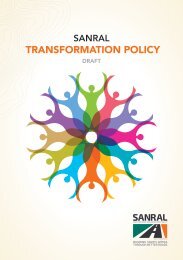Medical Focus - GPH - Vol 3 No 2 250521
Create successful ePaper yourself
Turn your PDF publications into a flip-book with our unique Google optimized e-Paper software.
Managing schizophrenia with long-acting Injectables (LAIs) with
emphasis on the second-generation antipsychotics (SGAs)
Dr Frans Korb
Psychiatrist and Clinical Psychologist
Blairgowrie, Johannesburg, South Africa
chizophrenia is essentially a life-long disease that
usually starts in young adulthood with a prodrome in
adolescence and a lifetime prevalence ranging
between 1 to 1.5 %. The disease comprises a group of
disorders with heterogeneous aetiology and a strong
biological basis. Both the DSM-5 and ICD-10 classification
systems provide criteria for diagnosis which is usually
characterised by debilitating psychotic symptoms affecting
daily functioning in all aspects of life. Typically, ‘positive’
symptoms include fixed, false beliefs (delusions) and
perceptions without cause (hallucinations). The ‘negative’
symptoms are more difficult to treat and are issues like
apathy, lack of drive, disorganised behaviour and thought.
Catatonic symptoms such as mannerisms and bizarre
posturing might also be present.
Schizophrenia is a chronic disease that runs a course of psychotic
episodes with relapses and periods of reasonable
functioning in-between. Each relapse of the psychosis is
usually followed by a further deterioration in the patients’
baseline functioning. Relapses most often require hospitalisation.
Antipsychotics remain the mainstay of treatment for
schizophrenia.
Classification of antipsychotics
All currently available antipsychotics have in common blocking
dopamine in the brain to a greater or lesser extent. Traditionally
they can be classified according to their biochemical
structure and their antipsychotic effect (high-potency versus
low-potency drugs). In later years, the antipsychotic group of
drugs have been divided into the typical, or first-generation
antipsychotics (FGAs) and atypical, or second-generation
antipsychotics (SGAs) groups primarily referring to their potential
of producing movement disorders. The mode of administration
(tablet vs oral dispersible vs immediate release
vs long-acting injectable) has also been important areas of
development and research.
Management of schizophrenia
The APA Practice Guideline for the Treatment of Schizophrenia
1 proposes three phases of management. In the Acute
Phase issues such as: Prevent harm to self and others, control
of disturbed behaviour, reduce severity of psychosis, address
precipitating factors, effect rapid return to best level of functioning,
develop alliance with patient and family, and formulate
a treatment plan and facilitate aftercare are implemented.
The goals of the second Stabilisation Phase are aspects including:
Reduce stress on the patient, minimise likelihood of
relapse, enhance adaptation to life in community, facilitate
continued symptom reduction and consolidation of remission,
and promote recovery. Thirdly the Stable Phase has as
its goal to sustain symptom remission or control, ensure the
patient is maintaining or improving level of functioning and
quality of life, treat exacerbation of symptoms or relapses
and monitor for adverse treatment effects. 1
In the Acute Phase oral SGAs antipsychotics are usually the
treatment of choice because of their generally lower risk
of extrapyramidal side effects as compared with the FGAs.
Traditionally the long-acting injectable antipsychotics (LAIs)
was regarded as the most suitable choice in the Stable/
Maintenance Phase of treatment. When planning long-term
management, a balance between efficacy, side-effects and
adherence for the individual should be considered. 2
Newer data and guidelines regard LAIs antipsychotic agents
and in particular the SGAs to be an important consideration
for treatment in all three phases of schizophrenia management.
LAIs should not only be reserved for individuals with
multiple episodes of schizophrenia but should include first-episode
psychosis and treatment-refractory schizophrenia. 1,2,3
Adherence and rehospitalisation
It is well documented that schizophrenia is a chronic illness
with a high risk of relapse that is frequently associated with
treatment discontinuation. Adherence to anti-psychotic
medication is most often a big challenge in the management
of schizophrenia. The Clinical Antipsychotic Trials of Intervention
Effectiveness (CATIE) study was initiated by the NIMH.
A total of 1493 patients with schizophrenia were recruited
at 57 U.S. sites. The results indicated that, overall, 74% of
patients receiving oral antipsychotics discontinued the study
medication before 18 months. Inefficacy or intolerable side
effects were cited as the most common reasons. 4
Several studies mainly from medical insurance companies examined
the ‘revolving door’ phenomenon amongst patients
with serious mental illness including schizophrenia. They
found that non-adherence with medication was one of the
most important factors related to frequency of hospitalisation.
5 The use of LAIs is particularly relevant for those people
whose adherence to oral treatment is poor. Improvement in
adherence can reduce relapse rates and rehospitalisation.
The use of LAIs is a convenient option for patients to overcome
the need of taking medications every day to maintain
remission. 2
10
Vol 3 No 2 - 2021











